Apalta DO offers terroirs and varieties off the beaten track, as db discovered at a masterclass with Domaines Bournet-Lapostolle Chile.
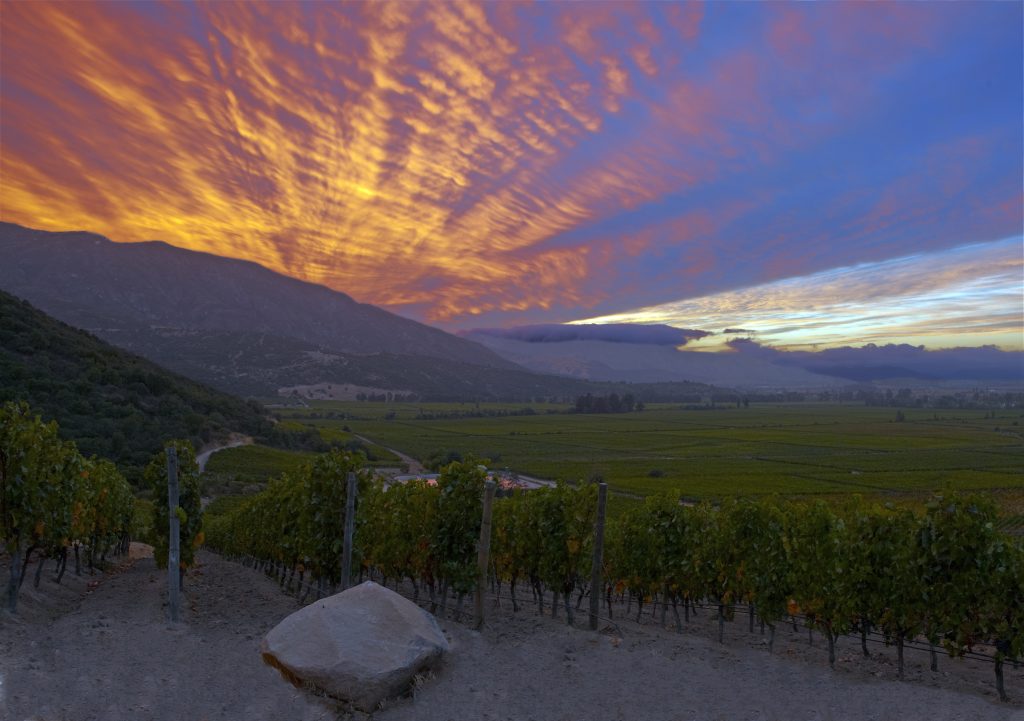
Much is made of the quality of Chile’s terroir. Yet, if there were to be an award for sheer quantity, Chile would also make a convincing case for the win. The country offers geography, and therefore terroir, on a huge and varied scale: whether the immense, cool waters of the Pacific Ocean; the Andes stretching in snowcapped peaks; or the otherworldly flats of the Atacama Desert.
All are assets for the country’s winemakers – and the sheer diversity of Chile’s terroirs was the starting-point for a recent masterclass on Apalta DO, organised by Domaines Bournet-Lapostolle Chile. Hosted by db editor-in-chief Patrick Schmitt MW, it saw the winery’s technical director, Andrea León, guide attendees through the estate’s terroir-driven wines.
León’s first point, therefore, was that her country and her people are products of dramatic geography. “Chile sees this crazy geography that marks not just our wines, but many other things we do,” she explained, citing its coastlines, mountains, deserts and glaciers.
She further mentioned its climatic zones. It is often said that Chile is (proportionally) the world’s longest country. Yet even that does not do justice to its wide range of climates, from arid and hot deserts to temperate wet climates and polar tundra.
It is both physical and cultural, a mélange that has influenced everything from its urban centres to the works of Nobel laureate Gabriela Mistral. Chileans like León, it seems, connect with their landscape deeply.
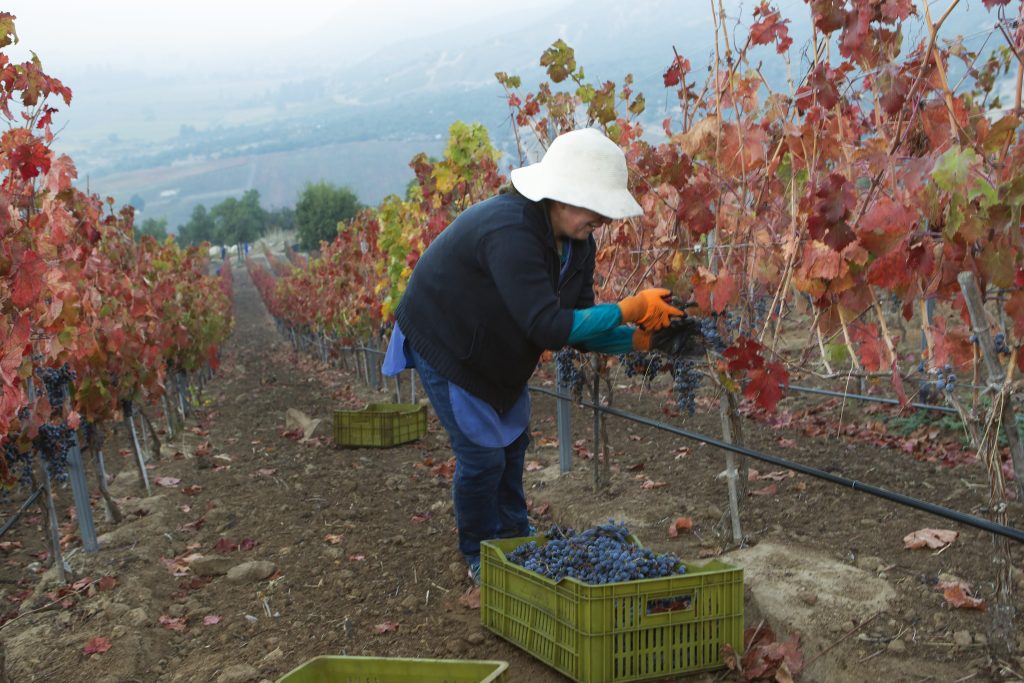 The people are, of course, central to the winery’s work.
The people are, of course, central to the winery’s work.
León’s work at Domaines Bournet-Lapostolle Chile does not span the entirety of the country. Indeed, the winery’s project in Apalta DO is highly specific. Yet Chile’s immense diversity is the setting-off point in understanding its work. Domaines Bournet-Lapostolle Chile works with an understanding of the potential of Chilean terroir, and its possibility in crafting diverse styles from a host of grapes.
That knowledge means she knows that it is futile to try to capture all of Chile in a single bottle. Instead, Domaines Bournet-Lapostelle Chile has homed in on a particular sub-region to evidence the country’s winemaking possibilities.
Specific solutions
Many wines might label themselves as being from Chile’s Valle Central, a winegrowing region that spans almost 100,000 hectares. Those sourcing more specifically might list Rapel Valley. More precisely still, you might see Colchagua Valley – well-known for its Carmenere, Cabernet Sauvignon and Merlot – on the bottle.
Apalta DO, however, is a very small region that is, understandably, seldom seen. Situated around halfway along the Colchagua Valley between the Andes and the ocean, it is a small centre of fine winemaking. “We’re really like a little Pomerol,” said León.
The DO has been the chosen home of Domaines Bournet-Lapostolle Chile since 1994 and, like Pomerol, its terroir is ideally suited to fine wine production. Sitting in the heart of Colchagua Valley, it benefits from the protection of both the Andes and the coastal ranges. Quintessential Chilean ripeness, therefore, is not an issue.
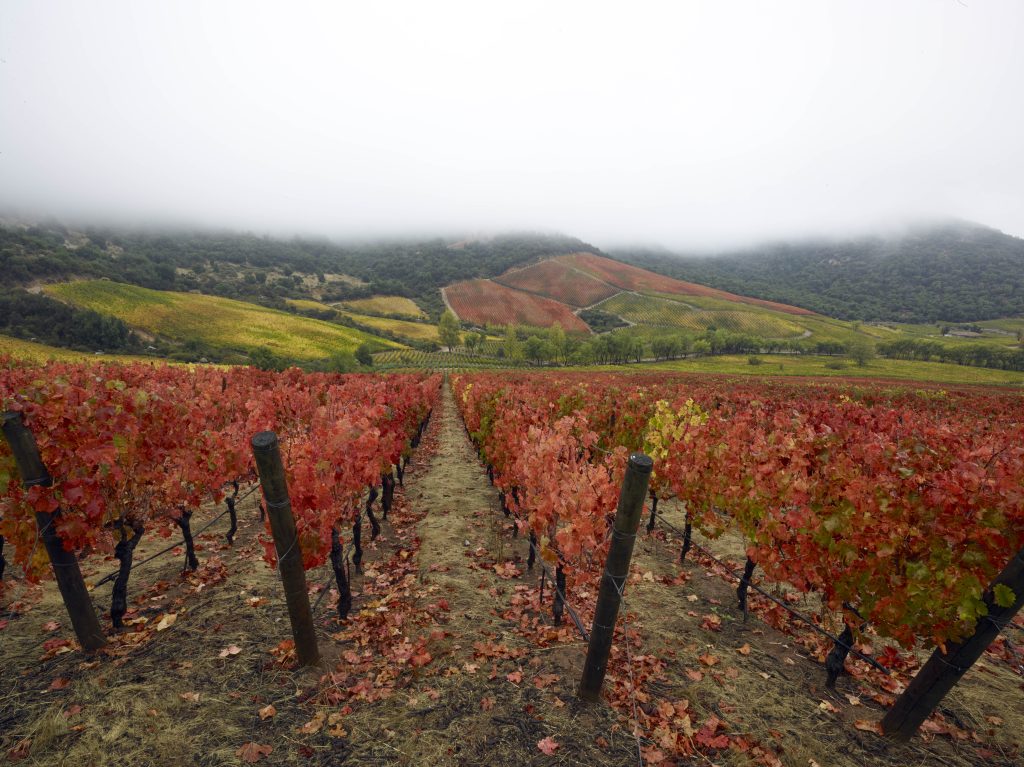 The site is notably cool.
The site is notably cool.
Yet the terroir of Apalta DO is destined for more than ripe, quaffable wines. The sub-region occupies a south-facing amphitheatre of hills. Since this is the Southern Hemisphere, that keeps the vines out of the most intense of the sunlight – indeed, often shading them – and so avoids overripening the grapes. With minimal disease pressure, the vines can enjoy a long, slow growing season for better aromatic development.
The soils likewise encourage complexity and concentration. Largely igneous in origin, they are deep and low in organic material – a marked change compared to Colchagua’s fertile valley floor. They promote deep roots, accessing varied trace minerals without a risk of excessive vigour. It should be no surprise that, on gaining DO status in 2018, Apalta DO was one of the first in Chile to be determined by terroir rather than administrative boundaries. Looking even further back, it has always been a site of particular terroir complexity: in the local language, Apalta means ‘poor soil’.
Domaines Bournet-Lapostelle has 230ha of vineyards spread across three estates in the DO. It is a patchwork of odd-shaped plots, dictated by terroir and access rather than by neat dividing lines. In only one of the estates, Clos Apalta, there are more than 15 different soil types. That diversity has served Domaines Bournet-Lapostolle well: it can cultivate a wide range of varieties even in one small corner of Chile.
A viticultural tour
“What’s really exciting,” said Schmitt, “is challenging the idea that the best wines of Chile are just Cabernet Sauvignon and Chardonnay.” Though unaffiliated with the winery, he tapped precisely into its guiding ethos. Yes, Domaines Bournet-Lapostolle produces exemplary Cabernet Sauvignon, but the masterclass showed that Apalta DO’s terroir can do far more.
Moreover, the focus is never on the varieties, but rather on the winery’s unique coordinates. León explained: “We don’t put any grape varieties on the label – it’s all about Apalta DO.”
That approach allows for some pleasant surprises and niche products. Gavilea, for instance, is the winery’s rosé. It eschews New World stereotypes of extracted, fruit-forward styles – instead, it is Provençal in profile, picked before any of the other grapes and aged in concrete and demi-muids for gently built weight. Excitingly for the masterclass attendees, Gavilea – previously only a cellar door option – is now arriving in small quantities on export markets.
Similarly, the presence of Rhône varieties – in Côte de Madame and Côte de Monsieur – is a deviation from the Chilean archetype. Viognier – of the unctuous, headily perfumed style – is made in the Clos de Lican estate, as is a red blend of Grenache, Mourvèdre and a dash of Syrah for balance. These expressions demonstrate the winery’s fine wine credentials, but are a far cry from Chile’s muscular Cabernet Sauvignons.
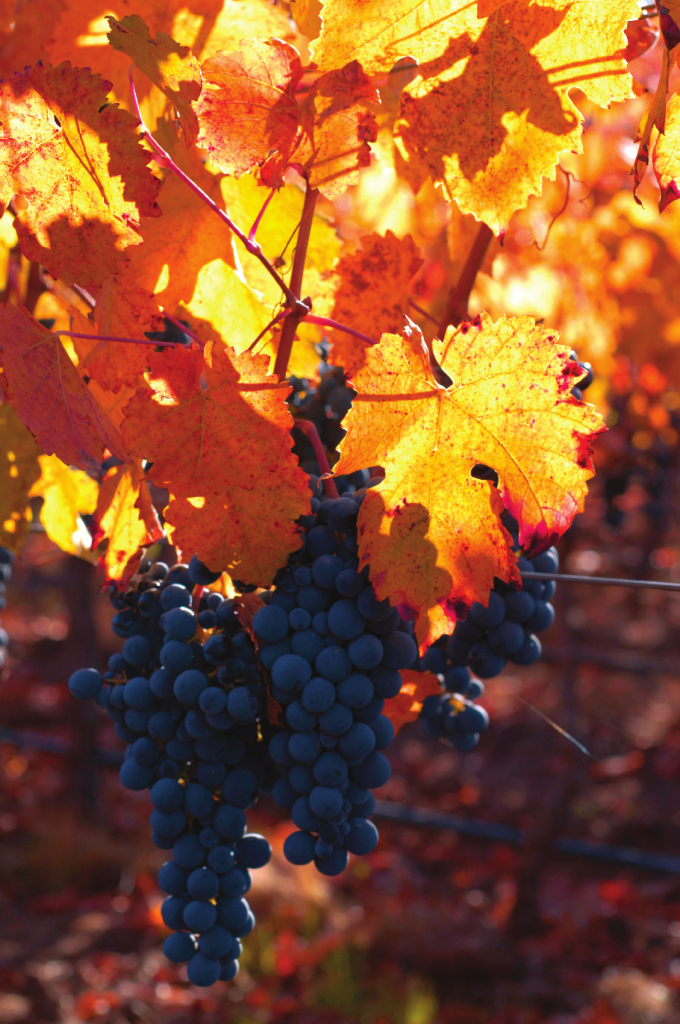 Carmenere on the vine at the estate.
Carmenere on the vine at the estate.
Further into the tasting, however, the focus did shift to Chile’s more usual suspects. Carmenere is a flagship for Chile though, as Schmitt highlighted, it is rarely treated as seriously as by Domaines Bournet-Lapostolle Chile.
That may well be because it is difficult to get right. León did not mince her words when discussing the variety. “Carmenere is a bit of a prima donna,” she admitted. “You need to read it well.”
Yet the winery’s three Carmenere-led Bordeaux blends demonstrate the grape’s potential in this terroir. Prelude, Petit Clos and Clos Apalta each contain at least 50% Carmenere. Clos Apalta, the estate’s flagship, contains 68%, supplemented by Cabernet Sauvignon and Merlot.
Prelude shows the recognisable fruity character of Carmenere, albeit at an elevated quality, and illustrating its propensity for spicy accents from the cooler hills. Petit Clos then strikes a middle ground: “A balance between intensity and accessibility,” according to León.
Clos Apalta, concluding the trio, proves Carmenere’s potential for power and structure. It makes use of the estate’s oldest vines in granitic hillside terroir, the deep-rooted, gnarly plants concentrating flavour and supple tannins in the berries. Once hand-harvested, the grapes macerate for up to six weeks, manually punched down for extraction. Post-fermentation – mostly in large oak vats – Clos Apalta spends 21 months in French oaks barrels, with around three-quarters of them new.
The result is deep and intense, balancing spice and concentration with berry fruit aromas and a bright structure. It is, thanks to careful selection in the vineyard and that ageing regime, accessible in its youth. The densely packed profile, however, promises significant ageworthiness.
Future facing
The 2022 vintage wines on show demonstrated quality winemaking honed over 30 years, but they also portrayed a winery well-placed for its next decades.
As in any wine-growing region, climate change is ever-present in the conversation at Domaines Bournet-Lapostolle Chile. With unpredictable oceanic influences, in particular determined by El Niño and La Niña, Chile faces more than just the usual issue of warming temperatures. León’s assessment is stark: “It is more and more challenging,” she said. “The reality is that things change every year.”
Yet 2022 shows that Apalta DO can weather future storms. The naturally cooler sites have resulted in elegant wines that retain their structure, even in a year that was relatively cool for Chile overall. As rising temperatures become more of a concern, such south-facing, hilly vineyards are likely to see their stock rise.
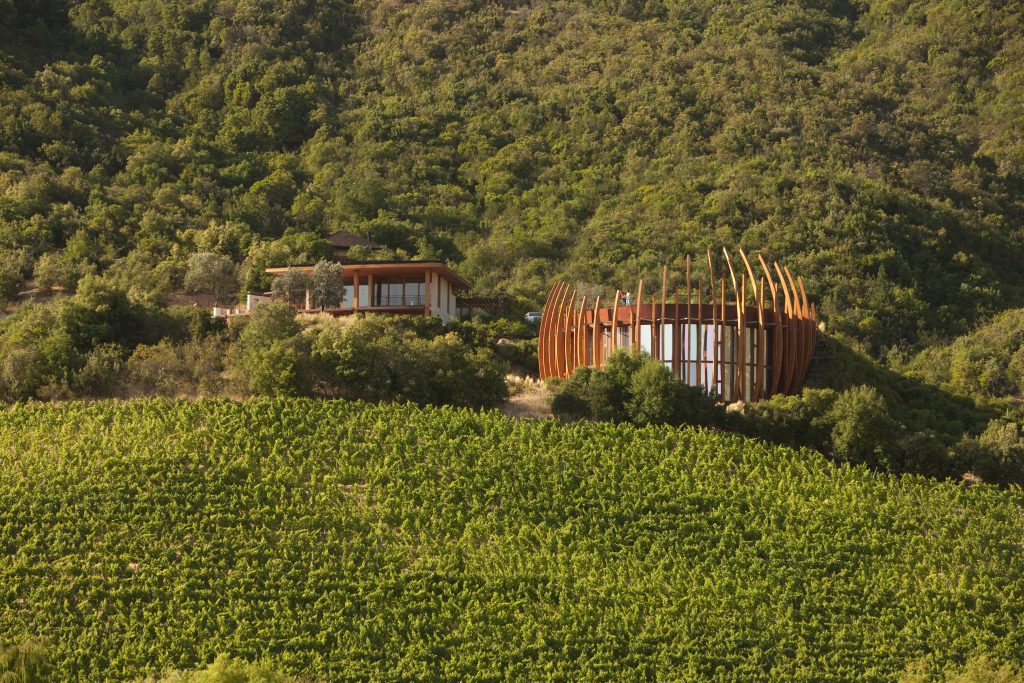 Domain Bournet-Lapostolle’s hillside winery.
Domain Bournet-Lapostolle’s hillside winery.
Moreover, as evidenced by the wines on show at the masterclass, Domaines Bournet-Lapostolle has the right attitude. It is plainly not a winery where production is dictated by received wisdom. Instead, it has built a portfolio that respects its terroir potential, and continues to do so; for instance, it is planting an experimental block of Touriga Nacional.
At the moment, Clos Apalta may look like part of the Chilean wine aristocracy. Yet, in Domaine Bournet-Lapostolle’s integrity of terroir and bold planting, there is something quietly radical and fluid. The wine trade should watch with interest: for all the prestige, the rich story in Apalta is still being written.
Related news
Bodega Argento on Fulham FC partnership: ‘We hope to raise the profile of Argentinian wines’
Sing Gloria: the remarkable vineyard behind a competition champion
Conte Vistarino celebrates successful harvest in historic year

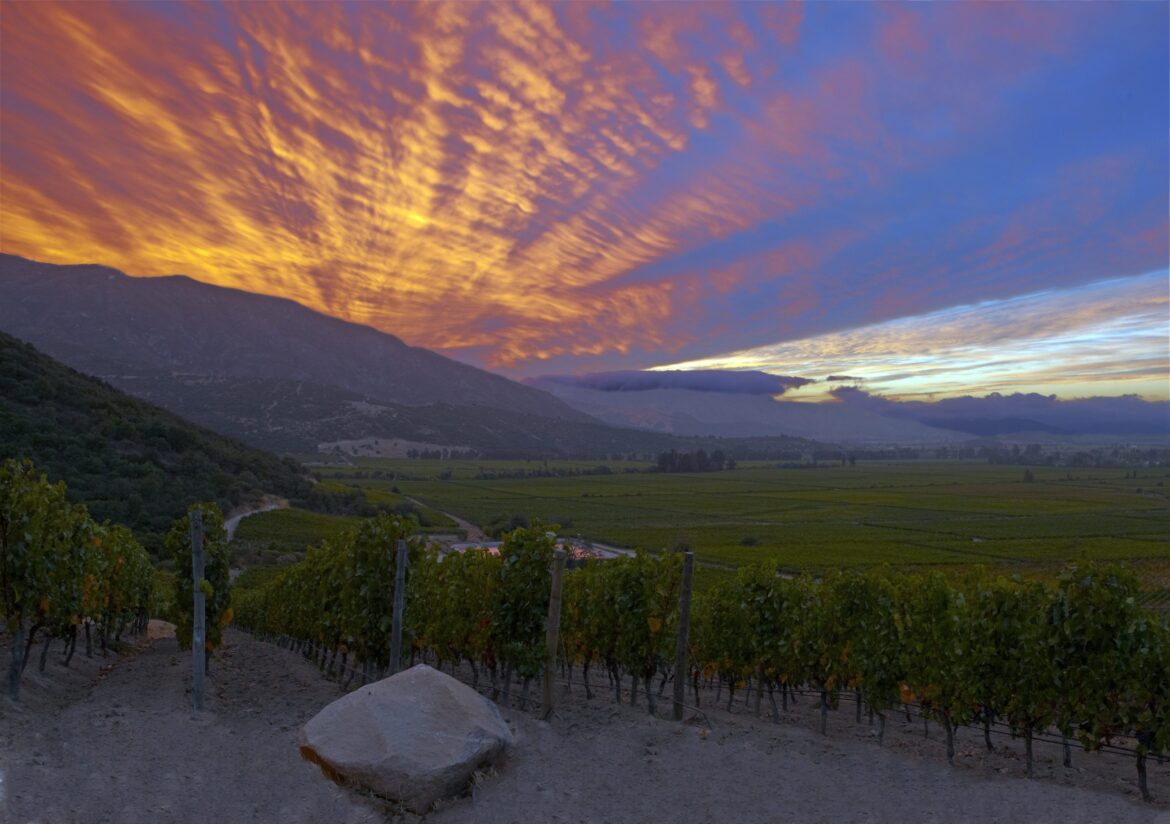
Dining and Cooking